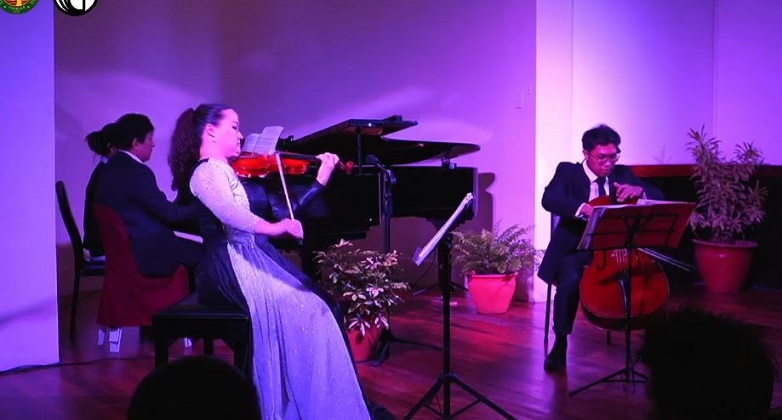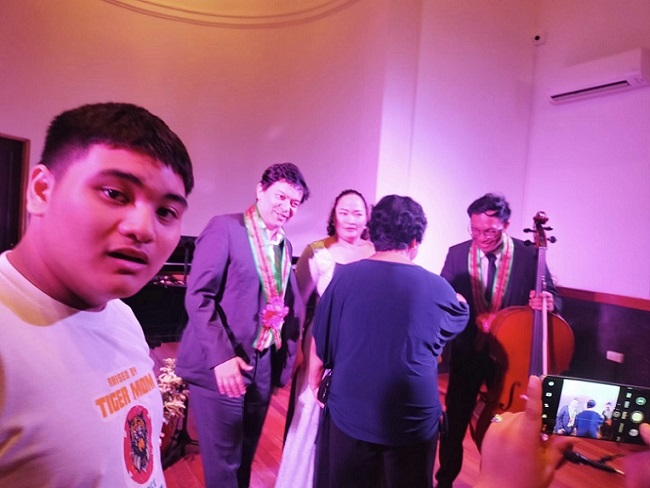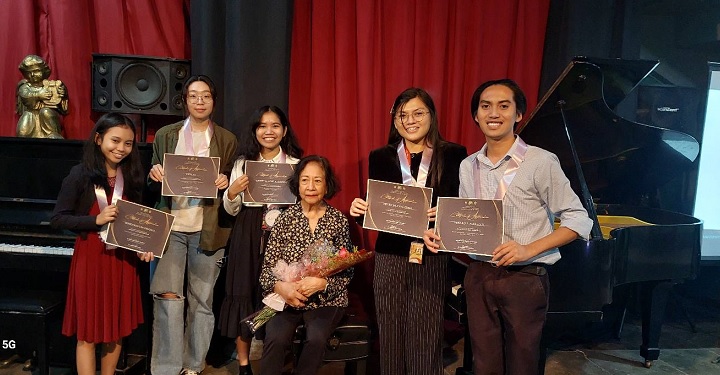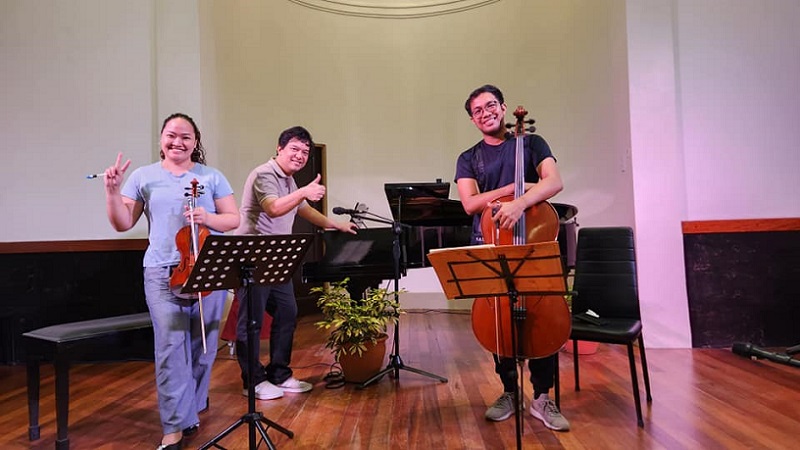The latest chamber music treats from the University of the Philippines Visayas in Iloilo City featured pianist Rudolf Golez, violinist Sara Maria Gonzales and cellist John Paolo Anorico.
The engagement was most welcome as the UPV performing arts hall is just about the most perfect venue for chamber music in that part of Western Visayas.

With Gonzales in the trio, the concert was a fitting way to celebrate Women’s Month.
The concert was also made meaningful by the presence of 15-year old Leu Angelo Suresca, who has autism.
Leo enjoys concerts of classical music. In 2017, he watched the 2017 MSO concert wih his mother at the Molo Church. He was also at the 2018 PPO concert at the Iloilo Convention Center and in 2019 at the concert in Nelly’s Garden.
Leu’s reaction to the UPV chamber music concert was pure exhilaration to the utter delight of his mothe,r Kathryn Claver. “It’s rare that a teenager with autism would have the patience to watch cultural shows like this. In his case, he enjoyed it thoroughly. He even asked me if he could dance. I told him to just to sit and listen. He’s always the first one to clap after performance,” Claver said.
For the first time in one’s concert-going days, one was focused on the teener’s reactions especially during the rendition of the Brahms Trio. Was he carried away as cello and piano worked their way into rare intensity? What was it in the coda part with its climactic fortissimo that made him sway with the music? To be sure, the last movement had delicate filigree passages with great tonal outbursts and a searing climactic part for the three instrumentalists.
One must say that the Brahms was edifying and made more meaningful with the presence of Leu.

The Office of Cultural Initiatives in the Arts (OICA) director Martin Genodepa found a perfect cultural partner in Prof. Isabella P. Cainglet, Director of UPV Gender and Development Program.
Opening with Haydn’s Piano Trio No. 1 in B Major, Op. 8, the visiting chamber musicians demonstrated the conversational nature of the trio with themes and motifs being shared and passed on between the players.
The initial balance was fairly good with Golez, Gonzales and Anorico finding a taut and creative way to find magic in the Haydn piece.
For one, there was good connections between musical exchanges and the UPV crowd got a perfect taste of the good features of Haydn’s chamber music writing.
The crowning glory of the first part of the concert was no doubt Brahms’ Piano Trio No. 1 in B major, Op. 8.
Completed in January 1854, this Brahms Trio was written when the composer was only 20 years old!
There was palpable tension in this piece when you hear the opening allegro con moto movement. The sound of Brahms instantly puts you in a certain mood, profound in most part but also highly spiritual as the music continues.
The adagio part in the third movement was soulful as it was tender and full of pathos.
The three instrumentalists found a common rapport which illumined the piece and projected its inner beauty.
The audiences cheered after the riveting allegro molto agitato finale, Piazzolla’s Four Seasons in Buenos Aires, which was just as exciting and made really more danceable with its tango elements.
The Piazzolla finale started with summer part (Verano Porteño) which was written in 1965 and originally an incidental music for the play Melenita de Oro by Alberto Rodriguez.
It was followed by Autumn (Otoño Porteño), then Autumn (Invierno Porteño) and Spring (Primavera Porteña).
Music lovers must realize that Piazzolla requires totally different temperament and execution probably the opposite of Haydn and Brahms.
The electrifying rapport of the trio could really send music lovers taking to the dance floor and tango the night away.
Golez has firm grasp of the piece, Anorico made it more piercing and Gonzales had her best moments in the concert.
The Ilonggo audience rewarded them with a standing ovation.
The encore number was a Pangasinan folksong called Malinac Lay Labi arranged by Ryan Cayabyab. It was enough to bring back sobriety in a crowd nearly driven to dance action by Piazzolla.
The chamber music treats just proved that music performed in an intimate venue actually give listeners what the music gurus call “intellectual stimulation, social camaraderie and spiritual renewal.”
Music teacher Ryan Caparella sums it up:“Chamber music finds its roots as far back as the Middle Ages and Renaissance when small groups of instrumentalists were often used as accompaniment for singers. As the name suggests, chamber music was originally composed to be performed in a large room or ‘chamber’ as opposed to a concert hall. On a personal note, I have always found chamber music to be my most gratifying channel of artistic expression. Different forms of music making provide distinct experiences for both audiences and performers. In solo playing, the individual is given free reign in making their own personal artistic decisions – the soloist is at the top of the hierarchy. In orchestral playing, sections of musicians work to blend their sound and experience the interplay of voices across the orchestra, but the conductor is at the top of the hierarchy, guiding the musical decisions. By comparison, chamber music then seems the most egalitarian avenue of music making: enough freedom to come to artistic decisions together as a group, while still emphasizing the interplay of equal, distinct voices: the perfect balance of personal expression without losing the communal experience of playing music with other people.”

A masterclass of pianist Carmencita Sipin Aspiras followed at the University of San Agustin Conservatory of Music after the UPV concert.
The March 3 concert graced by UPV Chancellor Clement C. Camposano was made possible by HSTL Foundation in coordination with Impresario Joseph Uy.
-30-
